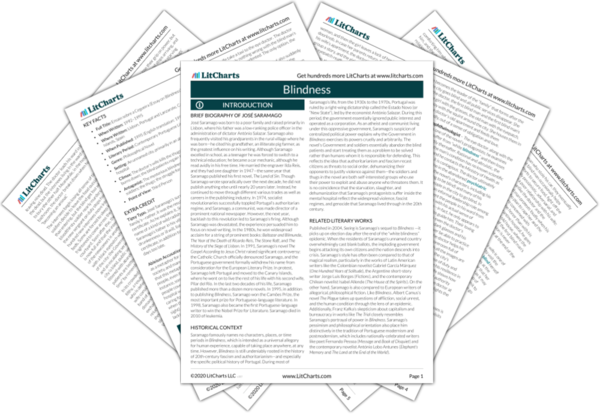Having initially committed his crime under the presupposition that he would never again meet his victim, the car-thief is now forced to admit and confront his actions. But there is no established authority to enforce “justice,” and it becomes clear that the car-thief is uninterested in repentance—his immoral actions, in other words, will go acknowledged but unpunished. However, his theft seems almost trivial now, since nobody in the quarantine has any use for a car. In fact, the car-thief punishing the first blind man for unwittingly passing on his syndrome completely inverts the normal parameters of justice: the willfully evil are punishing the unwitting victims of a contagion. This blurs the distinctions between guilt and innocence, perpetrators and victims. To make sense of the senseless epidemic, everybody searches for someone to blame: the government settles on the blind themselves, while the blind are left with no clear target.
